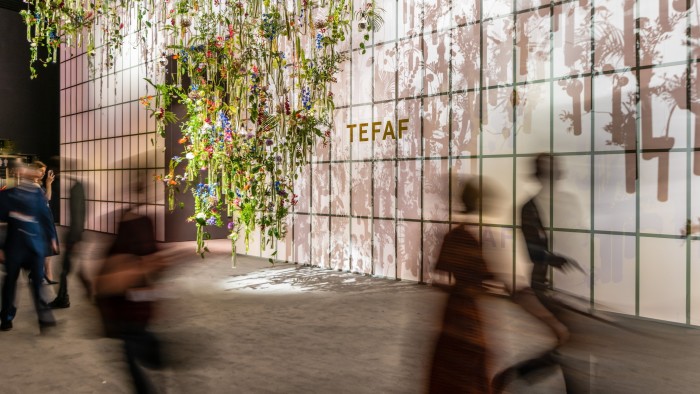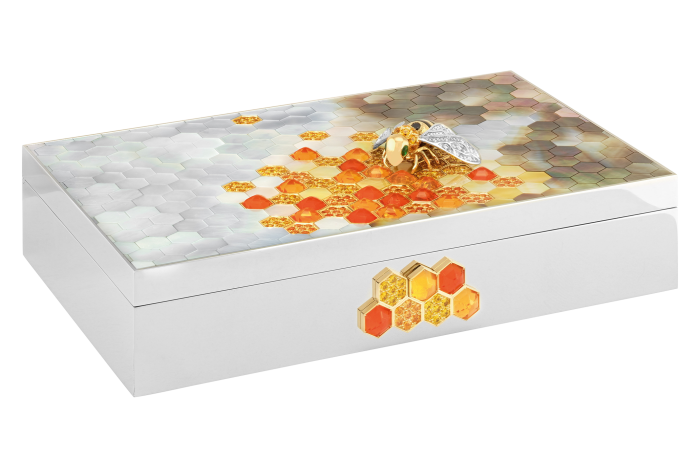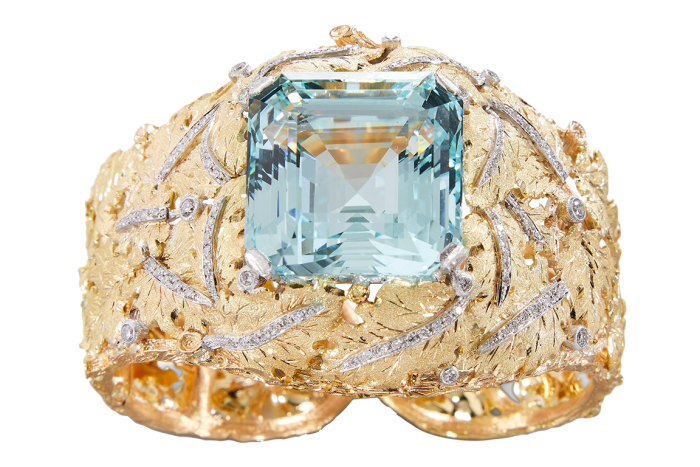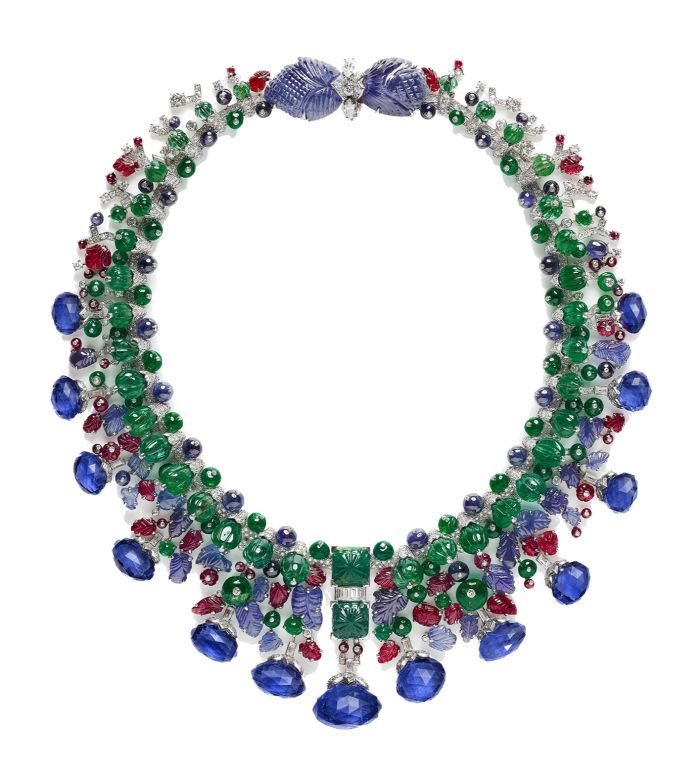High-end jewellers cash in on their vintage pieces

Roula Khalaf, Editor of the FT, selects her favourite stories in this weekly newsletter.
Tefaf, The European Fine Art Foundation fair specialising in antiquities, is not where one would expect to find a jeweller from Place Vendôme, such as Van Cleef & Arpels. It is typically in the business of tantalising with fresh new designs of jewellery and timepieces.
Yet, every year since 2014, the storied Richemont-owned French brand picks Tefaf to showcase its heritage collection: original Van Cleef & Arpels creations bought back from the market, restored and offered for sale once more. The project was led by Nicolas Luchsinger, now president of Asia Pacific, and was originally borne out of his frustration at not being able to assist clients who requested vintage pieces to complement their collections.
The idea of jewellers selling their own branded vintage pieces came from Cartier — also owned by Richemont — in the 1990s and has recently been adopted by Buccellati and watchmaker Zenith. More than simply claiming a share in the booming market for vintage luxury goods — which consultants McKinsey expects will grow at 10 to 15 per cent a year through to 2030, to reach $65bn-$100bn — such ventures are meant to reinforce the relationship with existing clients, entice new ones, and raise the brand’s value in the secondary market.
“In the mid-1990s, we realised that many of our clients for contemporary pieces were also interested in our antique Cartier pieces,” explains Pierre Rainero, Cartier’s image, style and heritage director. “And we said, why not offer that service, too?”

Today, Cartier has two distinct collections of antique pieces: Cartier Tradition, which has pieces for sale, and Cartier Collection, which comprises pieces kept by the house and lent for museum exhibitions. Assigning new vintage acquisitions to either collection is decided by a committee.
More recent are the vintage collections offered for sale by Buccellati and Zenith, since 2019. For the Richemont-owned Italian jeweller, it was client enquiries about the vintage pieces on exhibition to celebrate Buccellati’s 100th anniversary that inspired the service. However, for LVMH-owned watchmaker Zenith, it was a strategic project. “We launched Zenith Icons to highlight our patrimony and help build our brand equity and reinforce our value in the secondary market,” says Romain Marietta, product development and heritage director at Zenith.

While vintage pieces are regularly sourced from auction houses and antique dealers, a portion comes from existing clients. Selling through an auction house can be a lengthy process with no clear returns, as not all pieces sell or exceed the estimated value. By contrast, brands can make clear offers to owners, do not ask for commissions, and guarantee discretion. “We do not reveal any names, and we do not have a catalogue, so even your entourage will not know that you are selling a piece,” says Rainero.
In the ateliers, a newly-acquired vintage piece is parsed through the archives’ drawings, photographs and mock-ups to return it to its last state.
As an example, Rainero mentions the Tutti Frutti necklace that belonged to the early 20th-century French socialite Daisy Fellowes — part of the Cartier Collection and not for sale. The necklace was created in 1936, but it was restored to its 1963 state when Fellowes’ daughter, who inherited the piece, asked Cartier to rearrange a few stones around the neck. Otherwise, Cartier recreates antique cuts no longer in use, sources gemstones in matching colour and provenance if they have gone missing, and returns bracelets to chokers or earrings to bracelets if a different jeweller altered them. Each Cartier Tradition piece is accompanied by a certificate of authenticity explaining when and how it was bought and the restoration journey it went through.

As a rule of thumb, the longer the restoration process, the more expensive it becomes. Luca Buccellati, VIP client director of the eponymous jeweller, says “the exclusivity of some materials which are extremely hard to source nowadays” and “the artistic and historical value of the piece”, are also considered when pricing the restored pieces. A clear historical record which shows the provenance of the jewellery can push the final price tag further upwards.
Regardless of provenance, the uniqueness of vintage pieces is one of the main drivers of consumer interest, which is beneficial for the brand as a whole, according to Sarah Willersdorf, global head of luxury at consultancy BCG.
“Our recent research suggests that 59 per cent of customers either discovered a brand or bought it for the first time second-hand,” she says.
Rainero says some clients who initially approached Cartier only because of its vintage offerings later acquired some contemporary pieces, while other clients have taken the opposite approach, going from current to vintage.
A larger audience was reached at Tefaf by Van Cleef & Arpels with its equal assortment of heritage and contemporary pieces. “We found a lot of new buyers during this fair because there are buyers interested in antiques who are interested in collecting furniture, porcelain silver, not always collecting jewellery, but they have a taste for the old,” says Luchsinger. It’s a special taste for the old that brands like to nurture for the benefit of the new.
Comments